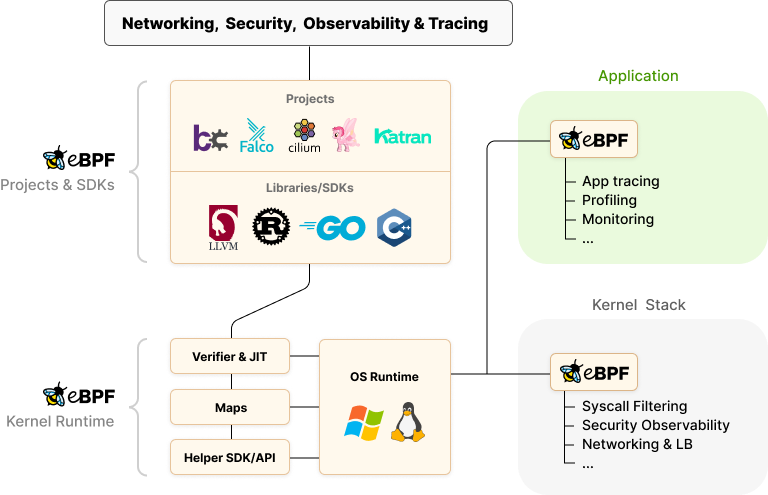eBPF#
What is eBPF?#
eBPF is a revolutionary technology with origins in the Linux kernel that can run sandboxed programs in a privileged context such as the operating system kernel. It is used to safely and efficiently extend the capabilities of the kernel without requiring to change kernel source code or load kernel modules.
Extended Berkeley Packet Filter (eBPF) stands as a transformative technology in the Linux kernel, enabling dynamic execution of sandboxed programs within the kernel. This breakthrough allows developers to extend privileged kernel functionalities safely and efficiently without modifying kernel source code or loading external modules.
The Evolution of eBPF
Originating from packet filtering, eBPF's application has broadened to encompass a wide array of system functions, including advanced networking features, observability tools, and security mechanisms. It operates by allowing user-space applications to run specific programs in response to events, with the kernel ensuring safety and performance through a verification process and Just-In-Time (JIT) compilation.
Architecture and Execution Model#
eBPF introduces an execution environment within the Linux kernel that processes bytecode for user-defined programs. These programs can be attached to various events and kernel points, executing logic that enhances system capabilities in real-time.
eBPF Programs#
eBPF Maps#
eBPF Verifier#
JIT (Just-In-Time) Compiler#
Try it out#
Find the right journey and explore the eBPF hands-on labs at your own pace!


